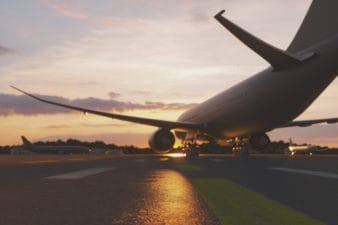Air Canada (TSX:AC) is walking on thin ice with another quarter of cash burning and rising losses. Its stock just fell 6% as the top four U.S. airlines reported weak third-quarter earnings. Warren Buffett’s worst fear came true, “The world has changed for airlines.” The airline bosses who were once hopeful for a return in travel demand are now going bearish. Many U.S. airline bosses don’t expect business travel to return to the pre-pandemic level, and some expect it to take a decade.
Even for leisure travel, the outlook looks bleak. The third quarter still saw some leisure travel demand, but the season of leisure travel fades after Labour Day. The airline bosses were expecting to see some travel in the fall. But now, they don’t expect any recovery in demand until mid-2021.
Why is business travel important for airlines?
Business travel was the driving force behind airline profits this decade. These were the travellers who purchased a last-minute ticket to close a deal or booked premium seats. Airlines’ biggest business customers were banks, tech, and law firms.
Business travellers composed of just 12% of passengers but contributed 60% to 70% towards the industry sales. Airlines had dedicated departments for these travelers. AC even has an all-business-class jet. But the pandemic changed it all.
It’s not as if business travel has come to an end. But yes, it would not be the same again, at least for the next three to five years. According to a Fortune magazine survey of Fortune 500 CEOs, 51% of respondents stated that business travel would never return to the pre-pandemic level in their company. Hence, AC is opening its all-business-class jet to economy travelers, and a last-minute ticket for first-class is listed at more than 50% discounted price.
Three factors are affecting business travel: first is the health risk of employees, and second is the 14-day quarantine requirement. Business travel is all about timeliness. A short business trip could become a five to six-week affair with the 14-day quarantine at arrival at both destinations. The third factor is the technological advancements in video conferences and remote access across various countries.
Video conferencing won’t replace face-to-face dealings, especially where confidentiality is of prime importance. But it will reduce the number of travellers as a major portion of the work, for which companies planned business trips, will now happen remotely. This explains why the combined market capitalization of the top five North American airlines ($65.5 billion) is less than half of Zoom Video Communications‘ market cap of $147.27 billion.
What airline bosses think about the recovery of business travel?
Looking at the state of business travel, many airline bosses have gone pessimistic about its recovery.
Delta Air Lines CEO Ed Bastian does not expect business travel to return to the per-pandemic level ever. Whereas, United Airlines chief commercial officer Andrew Nocella expects business travel to make a strong comeback probably a year after the coronavirus vaccine is widely available. Southwest Airlines CEO Gary Kelly believes that it could take a decade for business travel to get back to the 2019 level. However, American Airlines CEO Doug Parker believes that business travel isn’t going anywhere. Zoom meetings would increase business travel instead of detracting it.
There was pessimism around business travel after the September 11 attacks and also after the 2009 Great Recession. Many analysts were predicting the demise of business travel, but it came back. As it stands today, it might seem like the hay days are over, but it would return. Only the recovery period would be longer this time as the pandemic crisis is also bigger than the previous crisis.
What are the odds that Air Canada will survive?
AC entered the pandemic with the strongest liquidity compared to that of the top four U.S. airlines. Despite its strong liquidity of $9.1 billion, it can’t keep making losses forever. It has another 15-18 months before liquidity dries out. As per the revised estimates, air travel demand should recover in 12 months. Time is of the essence. If the demand doesn’t return, a government bailout is in the cards.




